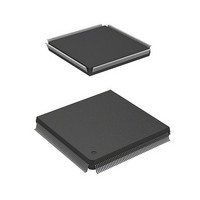HD6417750RF240DV Renesas Electronics America, HD6417750RF240DV Datasheet - Page 287

HD6417750RF240DV
Manufacturer Part Number
HD6417750RF240DV
Description
MPU 3V 16K I-TEMP,PB-FREE 208-QF
Manufacturer
Renesas Electronics America
Series
SuperH® SH7750r
Datasheet
1.D6417750RBP240DV.pdf
(1164 pages)
Specifications of HD6417750RF240DV
Core Processor
SH-4
Core Size
32-Bit
Speed
240MHz
Connectivity
EBI/EMI, FIFO, SCI, SmartCard
Peripherals
DMA, POR, WDT
Number Of I /o
28
Program Memory Type
ROMless
Ram Size
48K x 8
Voltage - Supply (vcc/vdd)
1.4 V ~ 1.6 V
Oscillator Type
External
Operating Temperature
-40°C ~ 85°C
Package / Case
208-QFP
Lead Free Status / RoHS Status
Lead free / RoHS Compliant
Eeprom Size
-
Program Memory Size
-
Data Converters
-
Available stocks
Company
Part Number
Manufacturer
Quantity
Price
Company:
Part Number:
HD6417750RF240DV
Manufacturer:
HITACHI
Quantity:
7 287
- Current page: 287 of 1164
- Download datasheet (7Mb)
This problem affects applications in science and engineering where extreme precision is required.
It is limited to cases where double-precision floating-point instructions are used to handle
denormalized numbers. The problem does not affect cases where double-precision floating-point
instructions are used but denormalized numbers are treated as zero, or cases where only single-
precision floating-point instructions are used.
Examples: The problem manifests itself in either of two ways. In one type of case a. and b. the
result is incorrect when denormalized numbers are used as input. In the other c. the result is
incorrect when a denormalized number and qNaN are used as input.
a. When the input for a double-precision FDIV instruction includes a denormalized number, an
b. When the input for a double-precision FMUL instruction includes a denormalized number, an
c. When the input for a double-precision FDIV, FADD, FSUB, or FMUL instruction consists of a
Effects: The effect of the problem is greatest in cases where denormalized numbers are used as
input with a double-precision FDIV or FMUL instruction, and an incorrect value is written to a
register as a result (a or b). In particular, mathematically inappropriate values may be generated,
such as denormalized number / denormalized number = 0 or denormalized number / 0 = 0.
Workarounds: Ordinarily, workaround 1. may be used. Workaround 2. is for calculations in
science or engineering applications where extreme precision and the use of denormalized numbers
are necessary.
1. When using double-precision floating-point instructions, set FPSCR.DN to 1 to select the
2. Avoid cases where using denormalized numbers as input produce incorrect results a. and b. by
incorrect result of zero or infinity may be generated.
incorrect result of infinity may be generated.
denormalized number and qNaN, the result may be incorrect.
mode in which denormalized numbers are treated as 0.
This workaround does not result in any decrease in performance.
means of software. Refer to “Modifying Software” below for details.
(i) Save the contents of the source and destination registers (DRn).
(ii) When a double-precision FDIV instruction generates a result of zero or infinity, call a user-
Use a TRAP routine to avoid cases where an incorrect result is generated when using a
denormalized number and qNaN as input c.. Refer to “Modifying a TRAP Routine” below for
details.
(i) When the input for a double-precision FDIV, FADD, FSUB, or FMUL instruction consists
specified function for processing denormalized numbers.
of a denormalized number and qNaN, use a TRAP routine to write the value of qNaN
(H'7FF7FFFF_FFFFFFFF) to the destination register.
Rev.7.00 Oct. 10, 2008 Page 201 of 1074
Section 6 Floating-Point Unit (FPU)
REJ09B0366-0700
Related parts for HD6417750RF240DV
Image
Part Number
Description
Manufacturer
Datasheet
Request
R

Part Number:
Description:
KIT STARTER FOR M16C/29
Manufacturer:
Renesas Electronics America
Datasheet:

Part Number:
Description:
KIT STARTER FOR R8C/2D
Manufacturer:
Renesas Electronics America
Datasheet:

Part Number:
Description:
R0K33062P STARTER KIT
Manufacturer:
Renesas Electronics America
Datasheet:

Part Number:
Description:
KIT STARTER FOR R8C/23 E8A
Manufacturer:
Renesas Electronics America
Datasheet:

Part Number:
Description:
KIT STARTER FOR R8C/25
Manufacturer:
Renesas Electronics America
Datasheet:

Part Number:
Description:
KIT STARTER H8S2456 SHARPE DSPLY
Manufacturer:
Renesas Electronics America
Datasheet:

Part Number:
Description:
KIT STARTER FOR R8C38C
Manufacturer:
Renesas Electronics America
Datasheet:

Part Number:
Description:
KIT STARTER FOR R8C35C
Manufacturer:
Renesas Electronics America
Datasheet:

Part Number:
Description:
KIT STARTER FOR R8CL3AC+LCD APPS
Manufacturer:
Renesas Electronics America
Datasheet:

Part Number:
Description:
KIT STARTER FOR RX610
Manufacturer:
Renesas Electronics America
Datasheet:

Part Number:
Description:
KIT STARTER FOR R32C/118
Manufacturer:
Renesas Electronics America
Datasheet:

Part Number:
Description:
KIT DEV RSK-R8C/26-29
Manufacturer:
Renesas Electronics America
Datasheet:

Part Number:
Description:
KIT STARTER FOR SH7124
Manufacturer:
Renesas Electronics America
Datasheet:

Part Number:
Description:
KIT STARTER FOR H8SX/1622
Manufacturer:
Renesas Electronics America
Datasheet:

Part Number:
Description:
KIT DEV FOR SH7203
Manufacturer:
Renesas Electronics America
Datasheet:











